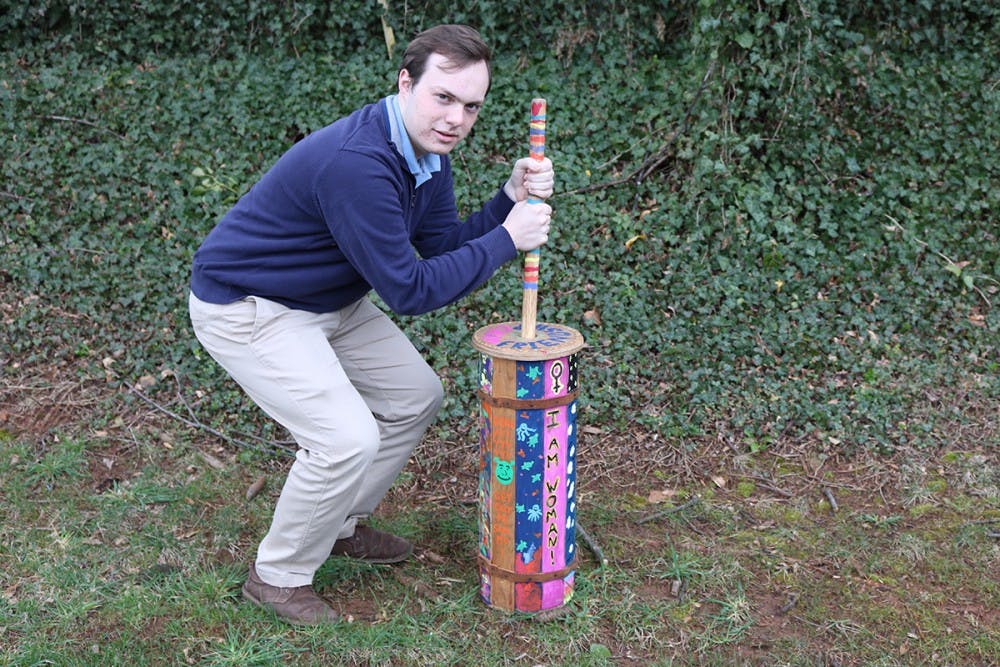There are five species of Viscacha —the rabbit-sized rodent that lives in South America — but there is only one that matters, and that is the Peruvian viscacha. Last Thursday, I realized how important the Peruvian viscacha is during one of the most mundane parts of my week.
Like most Americans, I churn my own butter on a weekly basis. I know that there is no better taste than that of home-churned butter. It’s part of the movement away from the mass-produced butter corporations that steal so much from America’s homeless. If you are one of the few people who still doesn’t churn their own butter, take my word for it, once you churn you will never return. And you might just come to your own realization about the Peruvian viscacha.
My epiphany regarding this species happened last Thursday. It was 2:30 a.m., prime time to churn butter on the East Coast. My butter churning partner joined me a couple minutes late, apologizing as she sat down and put on her butter churning gloves.
I began to push up and down on the sweet cream, churning it until it got thicker and thicker. As the butter got thicker, it got harder to churn. This was nothing new to me. After all, I’ve been churning butter for years, but there was something about this time that felt different. In fact, I felt different. I had been wanting a deeper understanding in life for a while, and no matter how long I microwaved it for, I simply could not find the answer in my oatmeal. Last Thursday, I realized the answer was in my home-churned butter. As I churned the sweet cream into butter, I finally reached the level of understanding I was searching for. I finally understood the Peruvian viscacha population. I had solved the greatest enigma of the modern era.
The Peruvian viscacha are well-known to the Western world for being the only rodent population in the world with a tendency towards regime-based leadership. This was first revealed to the world in 1932 when CNN investigators discovered the strict regime-like structure of the Peruvian viscacha population. They discovered a leader, nicknamed “el Marrón,” or “the brown one” which was an extremely misleading name, since almost all of the Peruvian viscachas are brown. El marrón has served as a very cruel dictator. She keeps to herself all of the food her fellow viscacha collect and only give the main population a small percentage of it. Additionally, every 10 years she is known to starve them until only a few survive. Today, el Marrón still leads the Peruvian viscacha, despite the viscacha having an average lifespan of only 7 hours.
Ever since this discovery, scientists and other news organizations have pondered why the Peruvian viscacha lean so much towards this regime-style hierarchy. No other rodent population has the same hierarchical style. In fact, a majority of rodents, especially those in South America, tend to be democratic-socialists. Regime-like hierarchies are much more common among birds and eight-legged insects. As a result, many theories have been suggested. Until this past week, the most commonly held belief was that Soviet communists trained the viscacha to become a communist dictatorship, but it is unclear as to how they have kept this up since the fall of the Soviet empire in 1991. The Peruvian viscacha governmental system remained a mystery, that is, until last Thursday.
As I continued to churn the butter, all of this information flashed before my eyes. Suddenly, I realized the answer. The Peruvian viscacha are the same as my home-churned butter. They start out weak, but as they rise and fall every ten years, they get thicker. My home-churned butter is the same way - it gets thicker as I churn it, just like the Peruvian viscacha. It all made sense to me.
Perhaps the Peruvian viscacha have found the best way to manipulate evolution. Perhaps they have figured out the secret of life. Probably not. They’re probably just a really weird freak of nature. However, in my opinion, the freaks of nature often lead the happiest lives and the thickest butter often tastes the thickest.
Jakob Cansler is a Humor Columnist for The Cavalier Daily. He can be reached at humor@cavalierdaily.com.






